Grant report: Ink and Parchment: An Integrated Model for the Study of Reused Manuscript Fragments in Early Modern Book Bindings
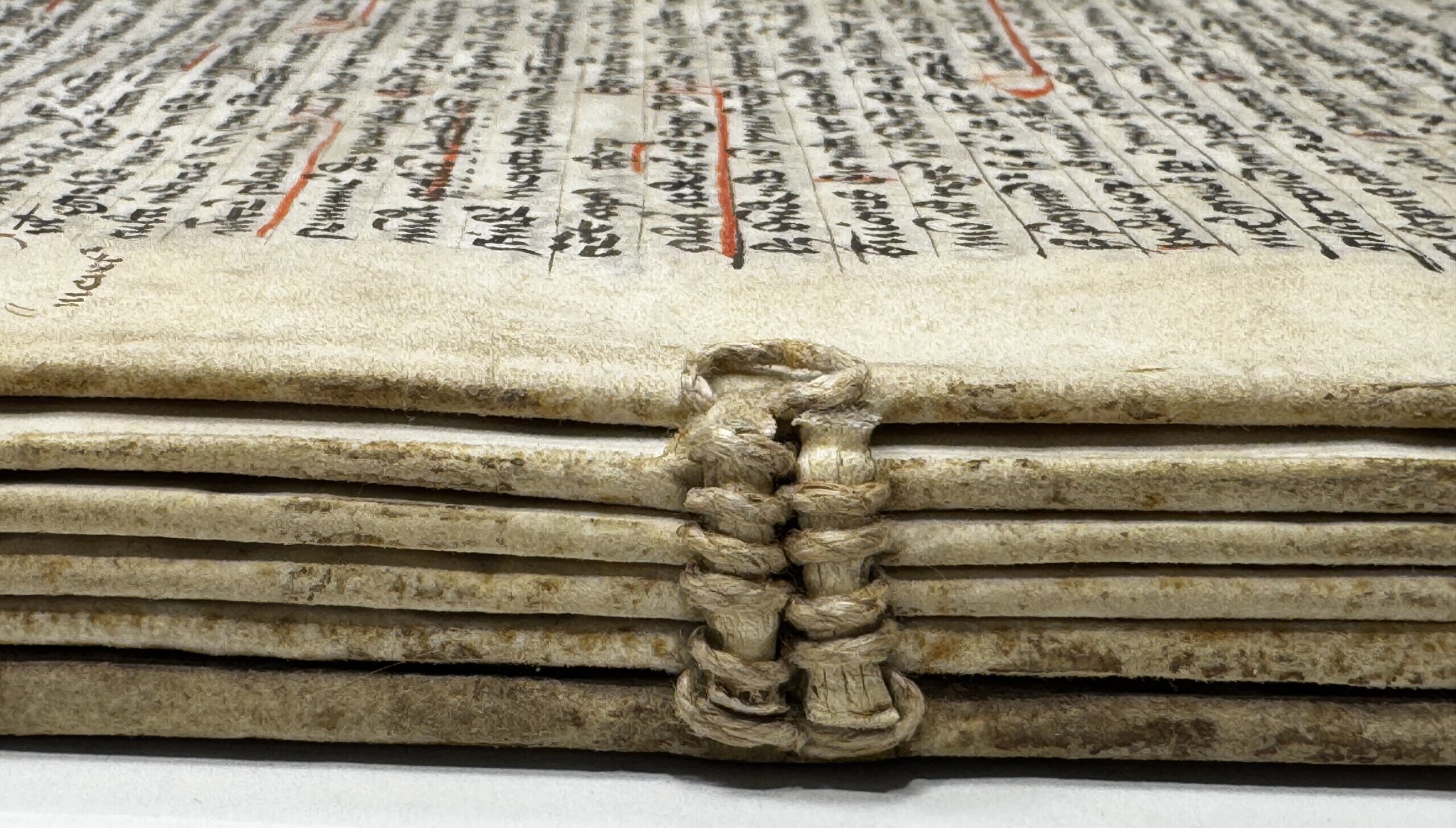
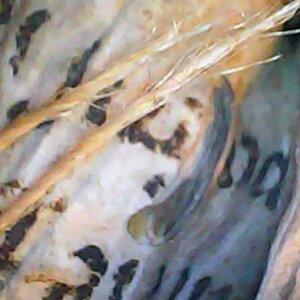 In July 2025, the research project Ink and Parchment: An Integrated Model for the Study of Reused Manuscript Fragments in Early Modern Book Bindings received funding from The Centre for Research on Culture, Language and Mind (Centre Q Grants). The research team includes dr hab. Monika Opalińska (project coordinator; Faculty of Modern Languages UW), dr hab. Barbara Wagner (Faculty of Chemistry and CNBCh UW) and dr Agnieszka Fabiańska (Manuscripts Department, University of Warsaw Library).
In July 2025, the research project Ink and Parchment: An Integrated Model for the Study of Reused Manuscript Fragments in Early Modern Book Bindings received funding from The Centre for Research on Culture, Language and Mind (Centre Q Grants). The research team includes dr hab. Monika Opalińska (project coordinator; Faculty of Modern Languages UW), dr hab. Barbara Wagner (Faculty of Chemistry and CNBCh UW) and dr Agnieszka Fabiańska (Manuscripts Department, University of Warsaw Library).
The aim of the project is to develop an integrated analytical model for the study of manuscript fragments. The project focuses on identifying the range of optimal physical and chemical techniques, which, when combined with philological analysis, will enable researchers to determine more precisely the origin, dating, provenance, and possible relationships between fragments originating from the same manuscript. Another important goal is to assess the effectiveness of specific instrumental techniques depending on the type of object under scrutiny and to determine to what extent modifications of standard procedures can increase their precision and reliability.
A second objective of the project is the continuation of research on fragments of the eleventh-century N-Psalter, originating from England. A working hypothesis suggests that the newly identified fragments might have reached Sweden in the sixteenth or seventeenth century, either through the transfer of private collections or as a result of the confiscation of library holdings by Swedish troops during the seventeenth-century military campaigns.
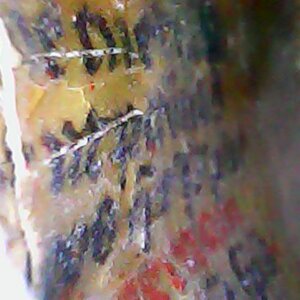
Therefore, one of the research activities was a visit to the University Library in Uppsala in October 2025. During the visit, preliminary material analyses were carried out using a digital microscope (Dino-Lite AD4113T-I2V), a wireless otoscope (with a 360° wide-angle lens), and a FULL-HD-X6-LED endoscopic inspection camera. The digital microscope, equipped with LED diodes emitting infrared (λ~940 nm) and ultraviolet (λ~395 nm) light, allows observation of manuscript surfaces under various lighting conditions.
Using the equipment listed above, a series of in situ images of fragments was taken, which would otherwise be impossible unless an invasive, time-consuming and costly conservation procedures were involved. The images revealed both the elements of the book bindings, as well as the texts written on parchment fragments and preserved on other structural elements of the examined objects.
Fragments with overlapping layers of text are a particularly promising area for an extended research – these are not palimpsests, as might be expected, but fragments on which the letters from adjacent strips have been transferred onto the written surface. It was not uncommon for early modern bookbinders to glue one strip over another – either parallel or perpendicular. As a result of prolonged contact (often reinforced by pressure and adhesive), portions of script were sometimes transferred between adjacent parchment pieces. Such text transfers are particularly valuable when, due to later conservation work, for example, re-binding, the original material used by bookbinders has been lost. In such cases, the print-off marks left behind, if correctly identified, may provide crucial information about the manuscript waste it once contained but also about the former binding structure.
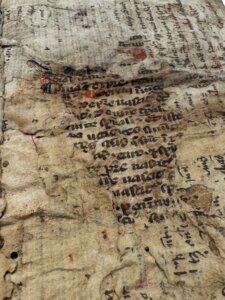 The proposed analytical model has significant potential for expanding the methodology of provenance research. Until recently, provenance studies relied primarily on reading ownership inscriptions, identifying stamps, ex libris, and supralibros, analysing marginal notes, and examining visible physical features such as bindings of manuscript and printed books. Chemical analyses of ink and pigment composition can, in certain cases, confirm or disprove the origin of specific items from previously identified scriptoria, aid in the classification and characterization of scribal workshops, and help establish similarities and differences between main texts and marginalia — no longer solely on paleographic grounds. Analyses of material features, such as the ruling patterns in manuscripts, allow researchers to compare and systematize, with greater precision, the practices of particular scriptoria or even individual scribes.
The proposed analytical model has significant potential for expanding the methodology of provenance research. Until recently, provenance studies relied primarily on reading ownership inscriptions, identifying stamps, ex libris, and supralibros, analysing marginal notes, and examining visible physical features such as bindings of manuscript and printed books. Chemical analyses of ink and pigment composition can, in certain cases, confirm or disprove the origin of specific items from previously identified scriptoria, aid in the classification and characterization of scribal workshops, and help establish similarities and differences between main texts and marginalia — no longer solely on paleographic grounds. Analyses of material features, such as the ruling patterns in manuscripts, allow researchers to compare and systematize, with greater precision, the practices of particular scriptoria or even individual scribes.
Until recently, features such as ink colour, illumination saturation, and ruling depth have been assessed mainly through visual inspection. Specialized equipment and modern analytical techniques significantly enhance the accuracy of such analyses and make the evaluation more quantifiable.
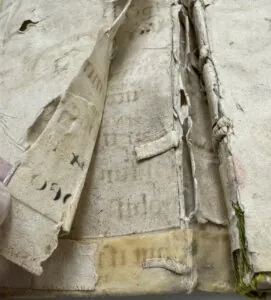 The project is interdisciplinary – it combines the humanities and the natural sciences. Owing to such an integrated approach, the process of identification and classification of manuscript fragments is more viable. Furthermore, an assessment of their preservation state, level of degradation, and conservation needs – all of which are crucial for the long-term protection of cultural heritage objects – may be determined with much greater precision. The project results will be discussed in detail in a forthcoming academic publication.
The project is interdisciplinary – it combines the humanities and the natural sciences. Owing to such an integrated approach, the process of identification and classification of manuscript fragments is more viable. Furthermore, an assessment of their preservation state, level of degradation, and conservation needs – all of which are crucial for the long-term protection of cultural heritage objects – may be determined with much greater precision. The project results will be discussed in detail in a forthcoming academic publication.
Our research in Sweden was generously supported by the team of librarians from Carolina Rediviva Library at Uppsala University: Peter Sjökvist, Josefin Bergmark Jimenez, Maria Berggren, and Anna Fredriksson. We wish to express our sincere thanks for their invaluable assistance in organizing the research schedule, as well as, their feedback and consultations, which greatly enhanced our knowledge of the collection’s provenance and, in several cases, directed our attention toward new potential research avenues.
